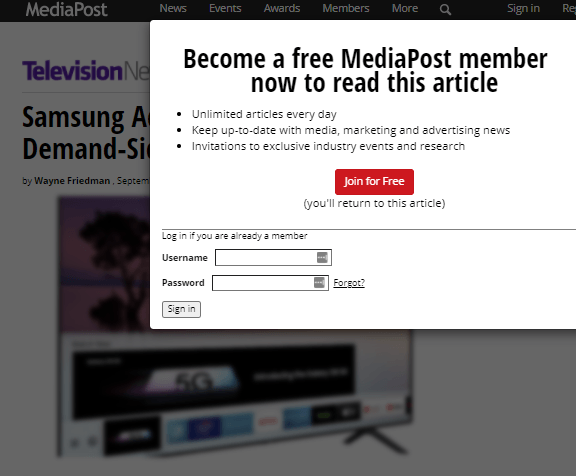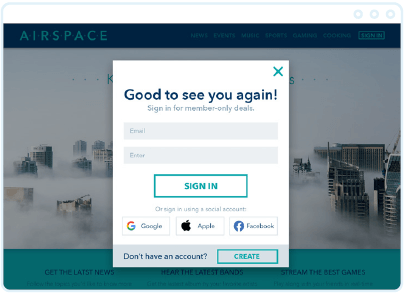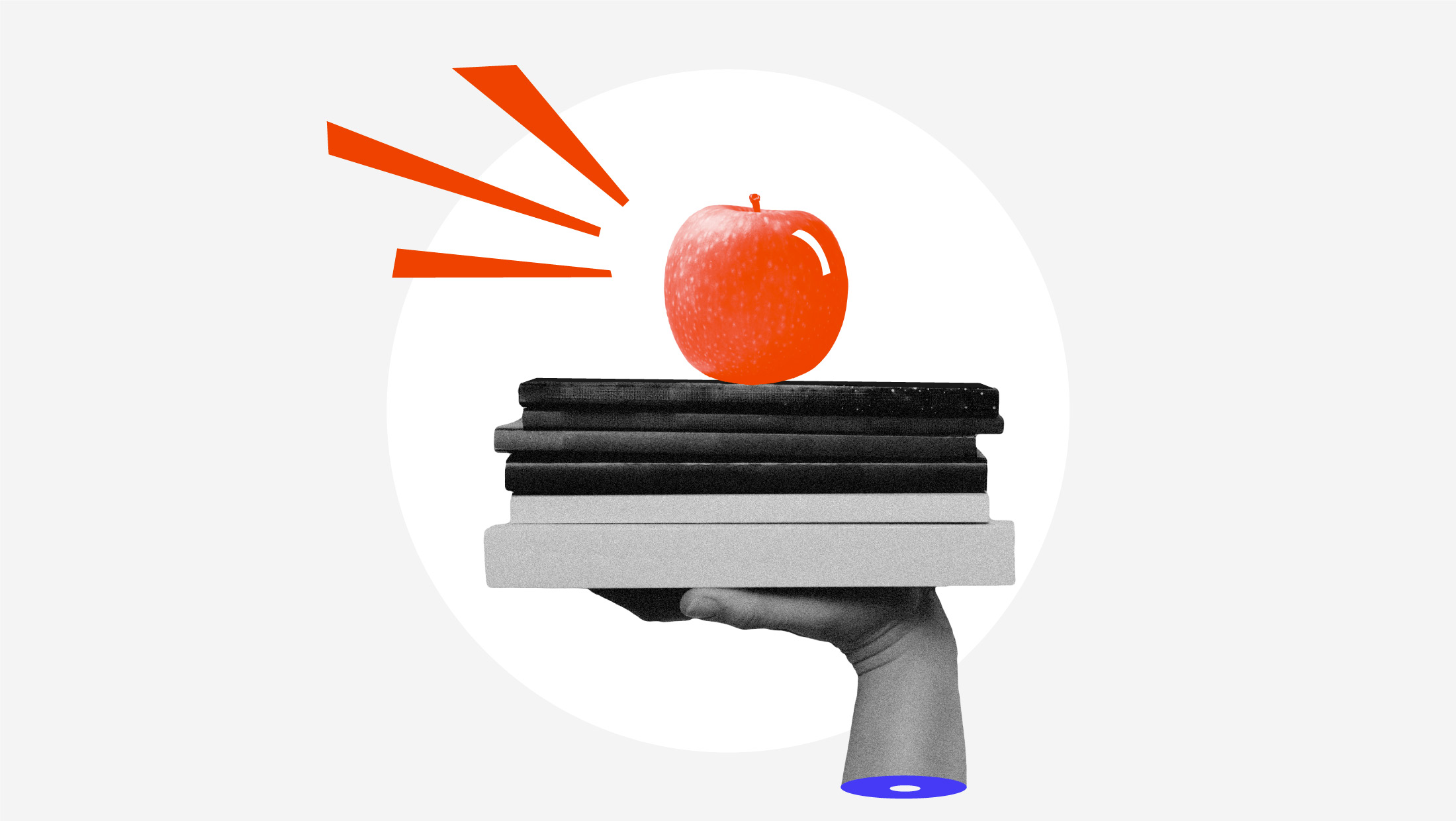How can we help you?
We want to hear from you. And it’s easy to reach us. Give us a shout at 844-886-2252, send us an email at hello@mediumgiant.co, visit our contact page, or fill out the form right here. You can expect a response within two business days.
What are you looking for?
The decline of cookies and the future of digital marketing
Google Chrome is set to ditch all third-party cookies used in online advertising by 2024. Cookies are small files used to store information preferences about you that stick around after you leave a website. They can be helpful for websites remembering things about you and targeting relevant ads in your direction.
On the flip side, cookies are not so helpful because they lack transparency with how much personal data and information they are collecting about you.
Google states, “We’re making explicit that once third-party cookies are phased out, we will not build alternate identifiers to track individuals as they browse across the web, nor will we use them in our products.”
In an internet without website preferences, we break down what this means for online browsing and the future of the internet.
So what actually happened to cookies?
The decline of the cookie has been in the works for some time now:
- In January 2020, Google announced that Chrome will begin to phase out third-party cookies in its browser by 2024.
- A few months later, in March 2020, Apple announced an update to its Safari Intelligent Tracking Prevention that blocks all third-party cookies by default.
- In March 2021, Google reiterated that announcement and further clarified that cookies will be phased out and not replaced with an alternative solution.
Okay, so what’s the problem with removing cookies?
Removing cookies impacts how the internet pays for itself.
There is a core value in exchange on the internet where users see relevant ads in exchange for content from publishers. Third-party cookies made advertising more relevant, enabling marketers to reach specific audiences across the web with greater precision and higher cost per thousand impressions (CPMs) for media placement.
This resulted in the proliferation of consumer data abuse, unethical practices, and a bloated media supply chain inflating prices and leading to significant advertising dollars going to waste.
Ultimately, the industry has done a poor job of both policing itself and educating consumers. Most normal people don’t know what cookies do; they just know that they don’t like them.
How does removing cookies impact digital advertising?
As a result, many of the prevailing digital media use cases will cease to work as we currently know them to. If the effectiveness of media targeting declines, the CPM of ads also declines, squeezing publisher margins even further.
Rather than reverting back to non-targeted media dark ages, digital targeting will instead begin to accelerate even faster toward more transparent mechanisms that give consumers more control over how their media consumption data is used:
- Audience activation and retargeting
- Media attribution
- Site personalization
- Frequency capping and suppression
- Audience insights and segmentation
What possible solutions have emerged?
We’re still in the early days of understanding where we are headed with tracking on the internet. Here are a few of the proposed methods and ways that targeting will continue in a cookieless future:
- Google announced a new method for targeting by clustering anonymous groups of people with similar interests, awkwardly referred to as Federated Learning of Cohorts (FLoC). Advertisements can then be shown to these large groups of people and are not based exclusively on one person’s behavior.
- Liveramp rolled out its Authenticated Tracking Solution (ATS) that provides authenticated first-party connectivity between opted-in publishers in order to enable anonymous “people based” targeting on cookieless inventory.
- The Trade Desk spearheaded an open-source approach called the Unified ID 2.0, which is another ID-based solution driven by email authentication.
- Europe’s NetID Foundation created a single privacy portal where consumers can give instructions about how media companies, e-commerce providers, and other retailers use their data.
How is digital targeting going to evolve?
This will make it more difficult to get a read on overall reach and frequency against specific audiences. More and more, we will see the largest industry players consolidate and wall off their inventory and audiences as competitive advantages to be guarded rather than shared.
Companies are evolving through the use of demand-side platforms (DSP), an automated buying platform used by advertisers and agencies to purchase display, mobile, video, banner, and search ads, to name a few. Here are some examples:
- Samsung Ads Demand Side Platform (DSP)
- Roku purchases and integrates the DataXu DSP
- Verizon walls off inventory and releases its own DSP
- Google has explicitly stated it will not integrate email-based authentication solutions
What does this mean for consumers?
As the publisher ecosystem more fully embraces an authenticated user system, be prepared to give a little to get your content. Businesses, publishers, and websites will increasingly require you to create an account or share your email address to view their content or shop in their store. They still want to know who you are and how you are consuming their site.
The question remains: How much will they gate their content behind these often annoying account-creation mechanisms?

Consumers will be asked more often for their data, which is at least better than its being taken automatically as has been done in the past.

Publishers will be forced to rely more and more on authenticated user experiences — email subscriptions, social log-ins, premium offerings or gated content — and give users good reasons to opt in.
What does this mean for digital agencies?
Agencies, like ours, will continue to offer best-in-class marketing solutions to help advertisers activate and reach target audiences across the digital landscape. We will continue to abide by industry standards that keep personally identifiable customer data safe and ensure inventory controls are in place to protect brand safety.
Inevitably there will be an increased emphasis on helping advertisers understand and prepare their analytics ecosystems for digital advertising in a cookieless environment. Some examples of how to do this:
- Google Privacy Sandbox and Ads Data Hub
- Facebook Conversion API Integration
- Activation of client first-party data
Our commitment is to stay ahead of the game and keep our audience and customers as informed as possible so they can make ethical decisions still aimed at growth.
The decline of cookies and the future of digital marketing
Google Chrome is set to ditch all third-party cookies used in online advertising by 2024. Cookies are small files used to store information preferences about you that stick around after you leave a website. They can be helpful for websites remembering things about you and targeting relevant ads in your direction.
On the flip side, cookies are not so helpful because they lack transparency with how much personal data and information they are collecting about you.
Google states, “We’re making explicit that once third-party cookies are phased out, we will not build alternate identifiers to track individuals as they browse across the web, nor will we use them in our products.”
In an internet without website preferences, we break down what this means for online browsing and the future of the internet.
So what actually happened to cookies?
The decline of the cookie has been in the works for some time now:
- In January 2020, Google announced that Chrome will begin to phase out third-party cookies in its browser by 2024.
- A few months later, in March 2020, Apple announced an update to its Safari Intelligent Tracking Prevention that blocks all third-party cookies by default.
- In March 2021, Google reiterated that announcement and further clarified that cookies will be phased out and not replaced with an alternative solution.
Okay, so what’s the problem with removing cookies?
Removing cookies impacts how the internet pays for itself.
There is a core value in exchange on the internet where users see relevant ads in exchange for content from publishers. Third-party cookies made advertising more relevant, enabling marketers to reach specific audiences across the web with greater precision and higher cost per thousand impressions (CPMs) for media placement.
This resulted in the proliferation of consumer data abuse, unethical practices, and a bloated media supply chain inflating prices and leading to significant advertising dollars going to waste.
Ultimately, the industry has done a poor job of both policing itself and educating consumers. Most normal people don’t know what cookies do; they just know that they don’t like them.
How does removing cookies impact digital advertising?
As a result, many of the prevailing digital media use cases will cease to work as we currently know them to. If the effectiveness of media targeting declines, the CPM of ads also declines, squeezing publisher margins even further.
Rather than reverting back to non-targeted media dark ages, digital targeting will instead begin to accelerate even faster toward more transparent mechanisms that give consumers more control over how their media consumption data is used:
- Audience activation and retargeting
- Media attribution
- Site personalization
- Frequency capping and suppression
- Audience insights and segmentation
What possible solutions have emerged?
We’re still in the early days of understanding where we are headed with tracking on the internet. Here are a few of the proposed methods and ways that targeting will continue in a cookieless future:
- Google announced a new method for targeting by clustering anonymous groups of people with similar interests, awkwardly referred to as Federated Learning of Cohorts (FLoC). Advertisements can then be shown to these large groups of people and are not based exclusively on one person’s behavior.
- Liveramp rolled out its Authenticated Tracking Solution (ATS) that provides authenticated first-party connectivity between opted-in publishers in order to enable anonymous “people based” targeting on cookieless inventory.
- The Trade Desk spearheaded an open-source approach called the Unified ID 2.0, which is another ID-based solution driven by email authentication.
- Europe’s NetID Foundation created a single privacy portal where consumers can give instructions about how media companies, e-commerce providers, and other retailers use their data.
How is digital targeting going to evolve?
This will make it more difficult to get a read on overall reach and frequency against specific audiences. More and more, we will see the largest industry players consolidate and wall off their inventory and audiences as competitive advantages to be guarded rather than shared.
Companies are evolving through the use of demand-side platforms (DSP), an automated buying platform used by advertisers and agencies to purchase display, mobile, video, banner, and search ads, to name a few. Here are some examples:
- Samsung Ads Demand Side Platform (DSP)
- Roku purchases and integrates the DataXu DSP
- Verizon walls off inventory and releases its own DSP
- Google has explicitly stated it will not integrate email-based authentication solutions
What does this mean for consumers?
As the publisher ecosystem more fully embraces an authenticated user system, be prepared to give a little to get your content. Businesses, publishers, and websites will increasingly require you to create an account or share your email address to view their content or shop in their store. They still want to know who you are and how you are consuming their site.
The question remains: How much will they gate their content behind these often annoying account-creation mechanisms?

Consumers will be asked more often for their data, which is at least better than its being taken automatically as has been done in the past.

Publishers will be forced to rely more and more on authenticated user experiences — email subscriptions, social log-ins, premium offerings or gated content — and give users good reasons to opt in.
What does this mean for digital agencies?
Agencies, like ours, will continue to offer best-in-class marketing solutions to help advertisers activate and reach target audiences across the digital landscape. We will continue to abide by industry standards that keep personally identifiable customer data safe and ensure inventory controls are in place to protect brand safety.
Inevitably there will be an increased emphasis on helping advertisers understand and prepare their analytics ecosystems for digital advertising in a cookieless environment. Some examples of how to do this:
- Google Privacy Sandbox and Ads Data Hub
- Facebook Conversion API Integration
- Activation of client first-party data
Our commitment is to stay ahead of the game and keep our audience and customers as informed as possible so they can make ethical decisions still aimed at growth.




